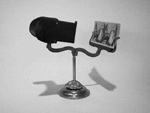HILLMAN STEREOVIEW GALLERIES
CANADA (Here) :: CHINA 1 :: CHINA 2 :: INDIA :: JAPAN :: KOREA
|
The Hillman Stereoview Archive 3-D Images of Canada's Early Years A CROSS-CANADA TOUR www.hillmanweb.com/3d |
 |


HONG KONG I |

HONG KONG II |

HONG KONG III |

SINGAPORE |

SINGAPORE II |

MALAYSIA |
| . |

SIAM :: THAILAND |
. |
![]()
PART III
CHINA 3D GALLERIES 61+
ENTER
www.hillmanweb.com/3da
![]()

Click
for Collage
![]()
PART IV
INDIA IN 3D
ENTER
www.hillmanweb.com/3dindia
![]()

Click
for Collage
![]()
PART V
JAPAN IN 3D
ENTER
www.hillmanweb.com/3djapan
![]()
PART VI
KOREA IN 3D
ENTER
www.hillmanweb.com/3dkorea
![]()
|

Travelling by the Underwood
Travel System -- Stereographs, Guide Books, Patent Map System
WARTIME
The Great War 1914-1918
|
|
|
Chicago World's Fair 1893: Columbian
Exposition
Part
of the Edgar Rice Burroughs Connections Series
|
|
|
|
|
|
|
STEREOVIEWS ~ STEREOGRAMS ~ STEREOSCOPES 
|
. |
|
"The most exciting entertainment invention of the century!"
The Mutoscope -- manufactured by the American Mutoscope and Biograph Companies -- worked on the same principle as a "flip-book." The individual image frames were conventional black-and-white, silver-based photographic prints on tough, flexible opaque cards. Rather than being bound into a booklet, the cards were attached to a circular reel. The reel held about 850 cards, giving a viewing time of about a full minute. The reel with cards attached had a total diameter of about ten inches. |

From pinktentacle.com
Geishas Viewing Stereoview Cards
TO THE
MANITOBA PHOTO ARCHIVE

Part of the Hillman EduTech
Research Project at Brandon University
BACK TO HILLMAN
MAIN SITE CONTENTS
All Original Work and Photo Restoration ©1996/2017/2020
William
Hillman
Faculty of Education Professor
(Retired)
Brandon University